Categories: Featured Articles » Interesting Facts
Number of views: 5389
Comments on the article: 0
The practical application of lasers
The invention of the laser can rightfully be considered one of the most significant discoveries of the 20th century. Even at the very beginning of the development of this technology, they already prophesied a completely versatile applicability, from the very beginning the prospect of solving a variety of problems was visible, despite the fact that some tasks were not even visible on the horizon at that time.
Medicine and astronautics, thermonuclear fusion and the latest weapons systems - these are just some of the areas in which the laser is successfully used today. Let's see where the laser found practical application, and see the greatness of this wonderful invention, which owes its appearance to a number of scientists.
Laser spectroscopy
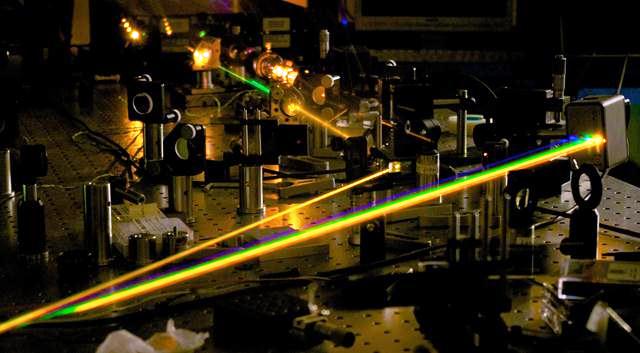
Monochromatic laser radiation can be obtained in principle with any wavelength, both in the form of a continuous wave of a certain frequency and in the form of short pulses, lasting up to fractions of a femtosecond. Focusing on the sample under study, the laser beam undergoes nonlinear optical effects, which allows researchers to carry out spectroscopy by changing the frequency of light, as well as conduct coherent analysis of processes by controlling the polarization of the laser beam.
Measuring distances to objects
The laser beam is very convenient to direct to the object under study, even if this object is very far away, because the divergence of the laser beam is very small. So, in 2018, as part of an experiment, a laser beam was directed from the Yunnan Chinese Observatory to the moon. The Apollo 15 reflectors, which were already installed on the lunar surface, reflected the beam back to Earth, where it was received by the observatory.
It is known that laser light, like any electromagnetic wave, moves at a constant speed - at the speed of light. Measurements of the beam passage time showed that the distance from the observatory to the moon, in the interval from 21:25 to 22:31 Beijing time on January 22, 2018, ranged from 385823,433 to 387119,600 kilometers.
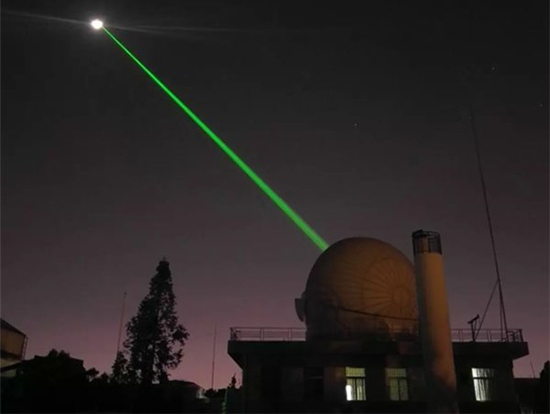
The laser range finder, for not so large distances as the distance from the Earth to the Moon, works on a similar principle. A pulsed laser sends a beam to an object from which the beam is reflected. The radiation detector receives a reflected beam. Having taken into account the time between the start of radiation and the moment when the detector caught the reflected beam, as well as the speed of light, the electronics of the device calculates the distance to the object.
Adaptive Optics and Atmospheric Distortion Compensation
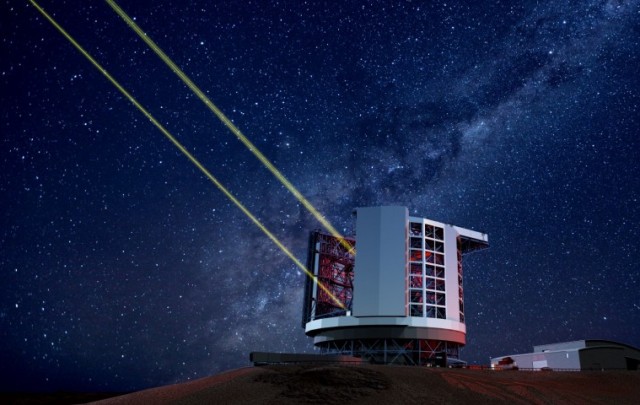
If you observe a distant astronomical object from the earth through a telescope, it turns out that the atmosphere introduces certain optical distortions into the resulting image of this object. In order to remove these distortions, methods of the so-called adaptive optics are used - distortions are measured and compensated.
In order to achieve this goal, a powerful laser beam is directed towards the observed object, which, like simple light, undergoes scattering in the atmosphere, forming an “artificial star”, the light from which, on the way back to the observer, experiences exactly the same optical distortions in the upper atmospheric layers, as well as the image of the observed astronomical object.
The distortion information is processed and used to compensate for optical distortion by appropriately adjusting the image of the observed astronomical object. As a result, the image of the object is more "clean."
Bio and photochemistry
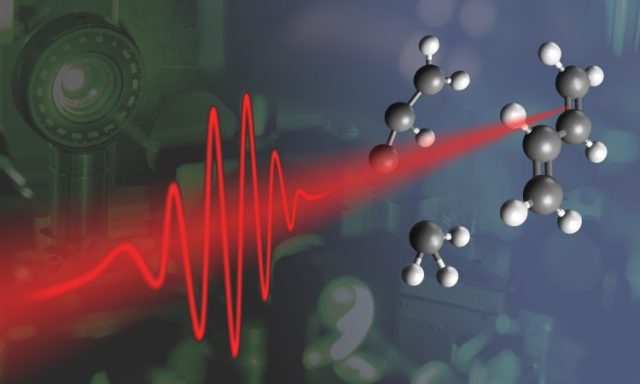
In biochemical studies on the formation and functioning of proteins, ultrashort laser pulses of femtosecond duration are useful.These pulses make it possible to initiate and study chemical reactions with a high temporal resolution in order to find and study even low-living chemical compounds.
By changing the polarization of the light pulse, scientists can set the necessary direction of the chemical reaction, choosing from a few possible scenarios for the development of events during the reaction strictly defined.
Laser pulse magnetization
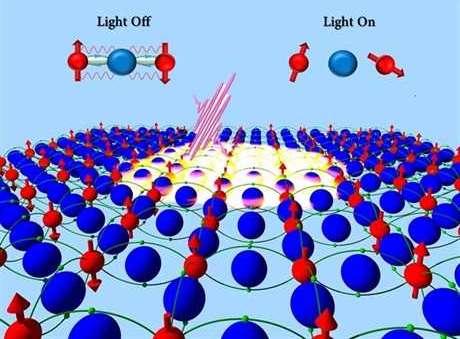
Today, research is being conducted on the possibility of ultrafast changes in the magnetization of media using ultrashort laser pulses of a few femtosecond duration. Already now achieved ultrafast demagnetization by a laser in 0.2 picoseconds, as well as optical control of magnetization by polarization of light.
Laser cooling
Early laser cooling experiments were carried out with ions. Ions were held by an electromagnetic field in an ion trap, where they were illuminated by a beam of laser light. In the process of inelastic collisions with photons, the ions lost energy, and thus ultralow temperatures were reached.

After that, a more practical method of laser cooling of solids was found - anti-Stokes cooling, which consists in the following. An atom of the medium, being in a state just above the ground state (at the vibrational level), was excited to energy just below the excited state (at the vibrational level), and, absorbing the phonon, the atom passed into the excited state. Then the atom emitted a photon whose energy is higher than the pump energy, passing into the ground state.
Lasers in fusion plants

The problem of holding heated plasma inside a thermonuclear reactor can also be solved with a laser. A small volume of thermonuclear fuel is irradiated from all sides for several nanoseconds by a powerful laser.
The target surface evaporates, which leads to enormous pressure on the inner layers of the fuel, thus the target experiences superstrong compression and compaction, and at a certain temperature thermonuclear fusion reactions can already occur in such a compacted target. Heating is also possible using ultra-powerful femtosecond laser pulses.
Laser-based optical tweezers
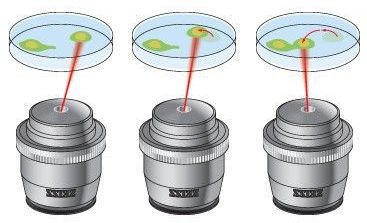
Laser tweezers make it possible to manipulate microscopic dielectric objects using light from a laser diode: forces are applied to objects within a few nanonewtons, and tiny distances from several nanometers are also measured. These optical devices are used today in the study of proteins, their structure and work.
Combat and defensive laser weapons
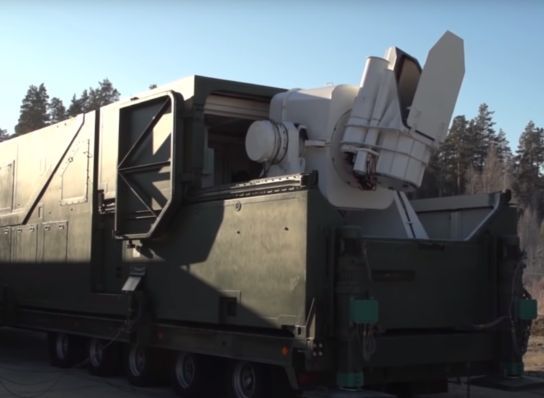
At the beginning of the second half of the 20th century, high-power lasers were already developed in the Soviet Union that could be used as weapons capable of hitting targets in the interests of missile defense. In 2009, the Americans announced the creation of a 100 kW mobile solid-state laser, theoretically capable of hitting aerial and ground targets of a potential adversary.
Laser sight

A small laser light source is rigidly attached to the barrel of a rifle or pistol so that its beam is directed parallel to the barrel. When aiming, the shooter sees a small speck on the target due to the small divergence of the laser beam.
Mostly for such sights, red laser diodes or infrared laser diodes are used (so that a spot can be seen only in a night vision device). For greater contrast in daylight, laser sights with green laser LEDs are used.
Deceiving a military adversary

A low-power laser beam is directed towards the enemy’s military equipment. The enemy discovers this fact, believes that some kind of weapon is aimed at him, and is forced to urgently take measures to defend instead of launching an attack.
Laser-guided projectile

It is convenient to use a reflected spot of a laser beam to aim a flying projectile, such as a rocket launched from an airplane. A laser from the ground or from an airplane illuminates the target, and the projectile is guided by it. The laser is commonly used infrared, as it is harder to detect.
Laser hardening
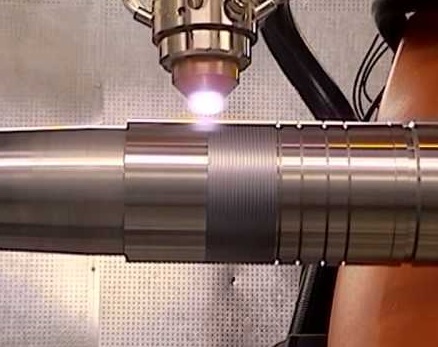
The surface area of the metal is heated by a laser to a critical temperature, while the heat penetrates deep into the product due to its thermal conductivity. As soon as the laser action ceases, the product cools rapidly due to the penetration of heat inside, where hardening structures begin to form, which prevent rapid wear during future use of the product.
Laser annealing and tempering
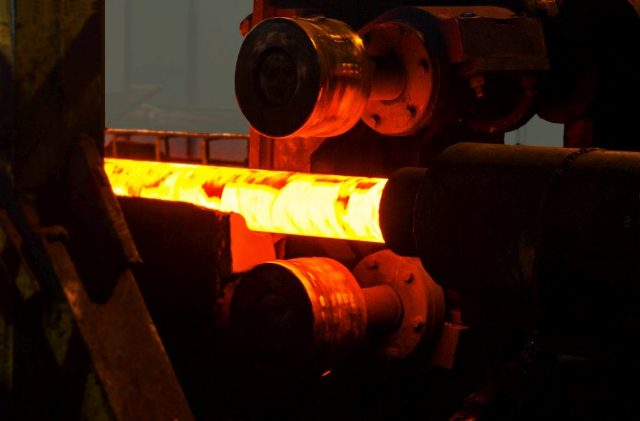
Annealing is a type of heat treatment in which the product is first heated to a certain temperature, then held for a certain time at this temperature, then it is slowly cooled to room temperature.
This reduces the hardness of the metal, facilitating its further mechanical processing, while improving the microstructure and achieving greater uniformity of the metal, relieves internal stresses. Laser annealing allows you to process small metal parts in this way.
Vacation is carried out in order to obtain higher ductility and reduce brittleness of the material while maintaining an acceptable level of its strength at the joints of the parts. For this, the product is laser-heated to a temperature of 150–260 ° C to 370–650 ° C, followed by slow cooling (cooling).
Laser cleaning and decontamination of surfaces
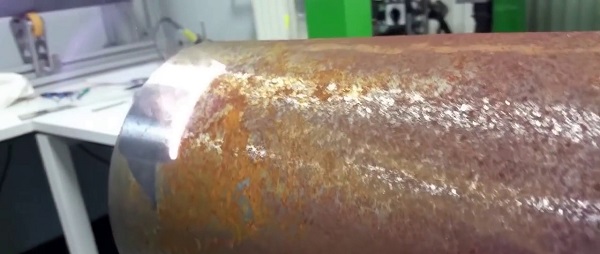
This cleaning method is used to remove surface contaminants from objects, monuments, works of art. For cleaning products from radioactive contamination and for cleaning microelectronics. This cleaning method is free from the disadvantages inherent in mechanical grinding, abrasive processing, vibration processing, etc.
Laser fusion and amorphization

High-speed amorphization of the prepared alloy surface with a scanning beam or a short pulse is achieved due to the fast heat removal, during which the melt freezes, a kind of metal glass with high hardness, corrosion resistance, and improvement of magnetic characteristics is formed. The precoating material is selected so that together with the main material to form a composition prone to amorphization under the action of a laser.
Laser alloying and surfacing
Alloying a metal surface with a laser increases its microhardness and wear resistance.

The method of laser surfacing allows you to apply wear-resistant surface layers. It is used in the restoration of high-precision parts used in conditions of increased wear, for example, such as ICE valves and other engine parts. This method is superior in quality to sputtering because a monolithic layer is formed here associated with the base.
Vacuum laser spraying
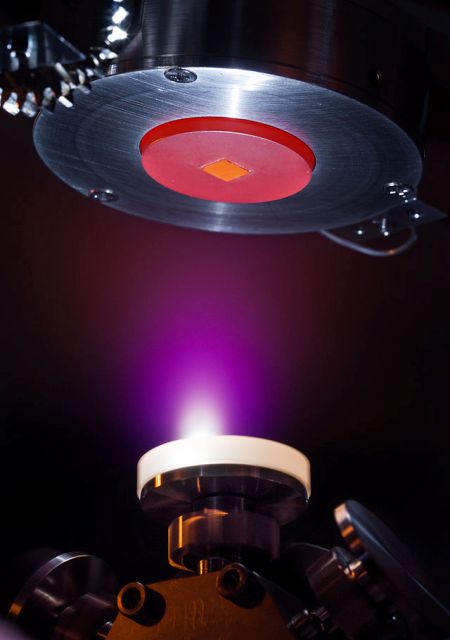
In vacuum, a portion of the material is vaporized by a laser, then the vaporization data is condensed on a special substrate, where with other products they form a material with the necessary new chemical composition.
Laser welding
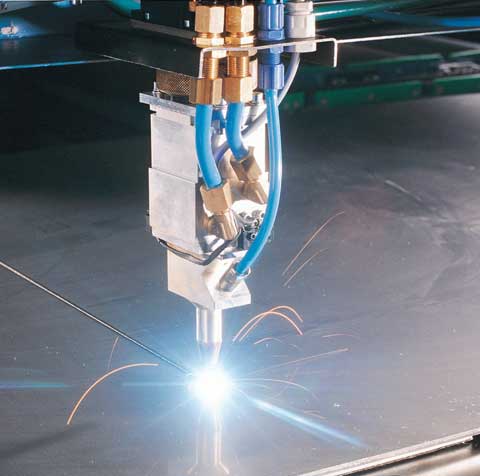
A promising method of industrial welding using high-power lasers, giving a very smooth, narrow and deep weld. Unlike conventional welding methods, the laser power is controlled more precisely, which allows you to very precisely control the depth and other parameters of the weld. A welding laser is able to weld thick parts at high speed, you just need to add power, and the thermal effect on adjacent areas is minimal. The weld is obtained better, as well as any connection obtained by this method.
Laser cutting

A high concentration of energy in the focused laser beam makes it possible to cut almost any known material, while the cut is narrow and the heat-affected zone is minimal. Accordingly, there are no significant residual strains.
Laser scribing
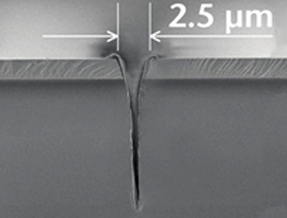
For the subsequent separation into smaller elements, the semiconductor wafers are scribed - deep grooves are applied with a laser. Here, a higher accuracy is achieved than when using a diamond tool.
The depth of the groove is from 40 to 125 microns, the width is from 20 to 40 microns, with a thickness of the processed plate from 150 to 300 microns. Grooves are manufactured at speeds up to 250 mm per second. The output of finished products is greater, marriage is less.
Laser engraving and marking
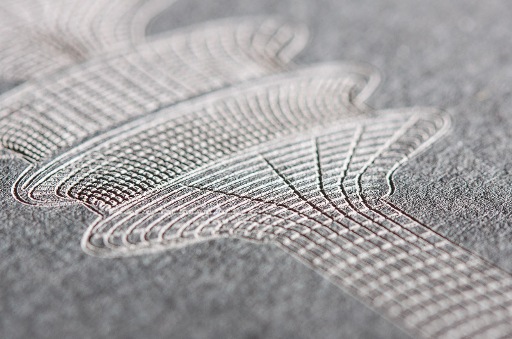
Almost everywhere in the industry today laser engraving and marking are used: drawing drawings, inscriptions, coding of samples, plates, nameplates, artistic decoration, souvenirs, jewelry, miniature inscriptions on the smallest and most fragile products - became possible only thanks to automated laser technology.
Laser in medicine
It is impossible to overestimate the applicability of lasers in modern medicine. Surgical lasers are used to coagulate the exfoliated retina of the eye, laser scalpels allow you to cut flesh, and weld bones with lasers. A carbon dioxide laser welds biological tissues.
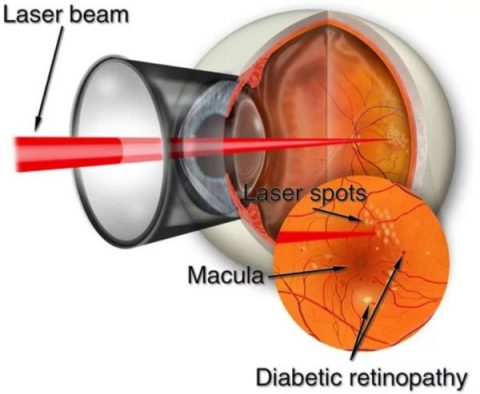
Of course, with regard to medicine, in this direction, scientists have to improve and refine each year, improve the technology of using certain lasers in order to avoid harmful side effects on the tissues that are nearby. It happens that a laser heals one place, but it immediately has a destructive effect on a neighboring organ or a cell accidentally falling under it.
Additional tool kits, specially designed to work together with a surgical laser, allowed physicians to succeed in gastrointestinal surgery, surgery of the biliary tract, spleen, lungs and liver.
Tattoo removal, vision correction, gynecology, urology, laparoscopy, dentistry, removal of brain and spinal tumors - all this is possible today only thanks to modern laser technology.
Information technology, design, life and laser

CD, DVD, BD, holography, laser printers, barcode readers, security systems (security barriers), light shows, multimedia presentations, pointers, etc. Just imagine how our world would look if it disappeared from it laser…
See also at bgv.electricianexp.com
:
